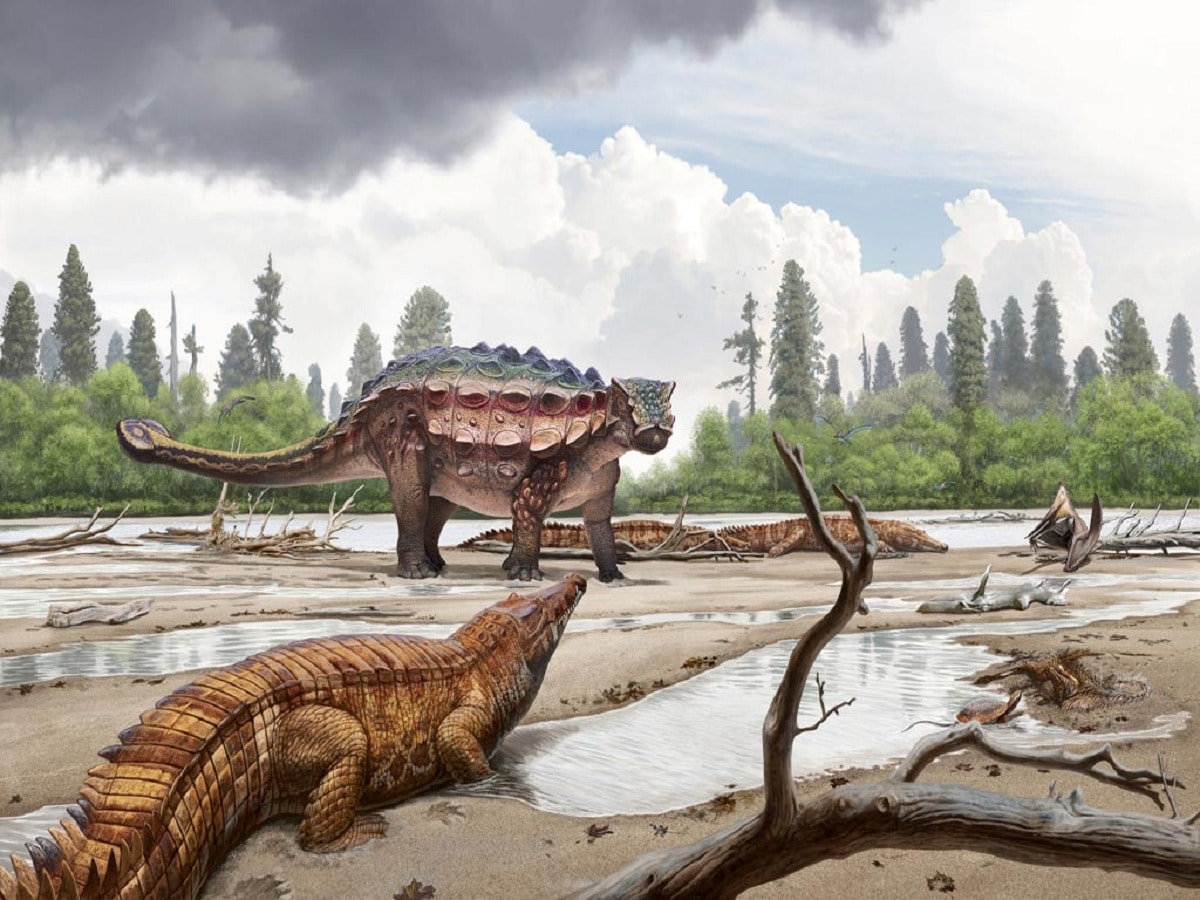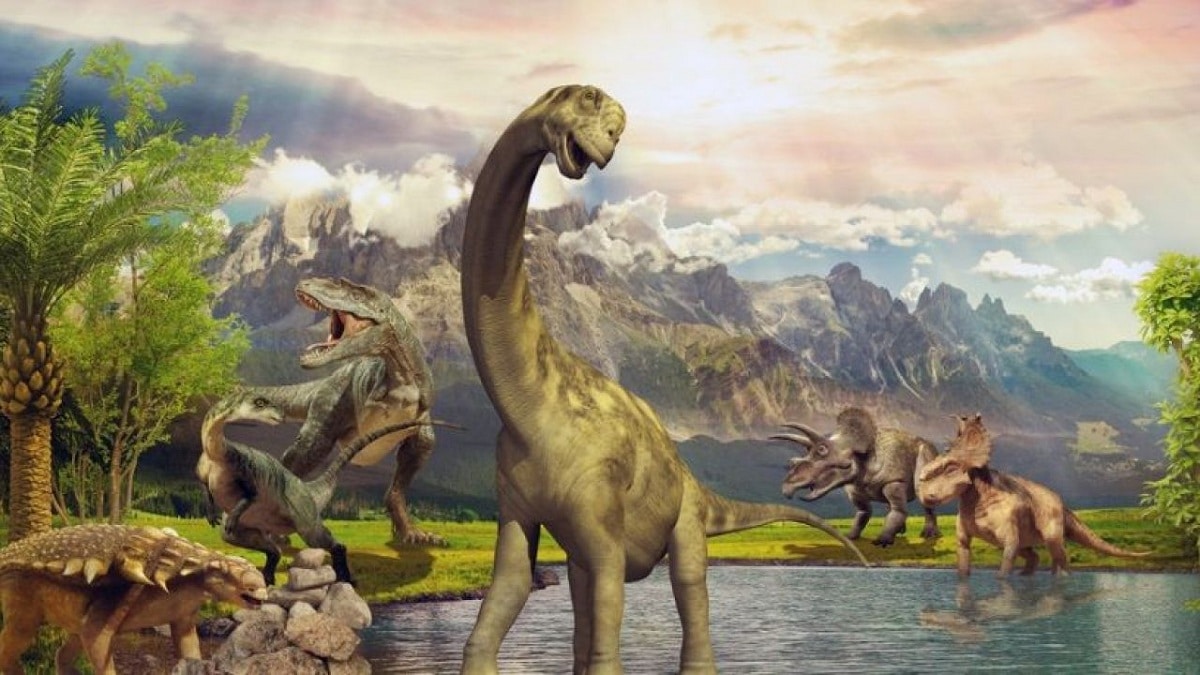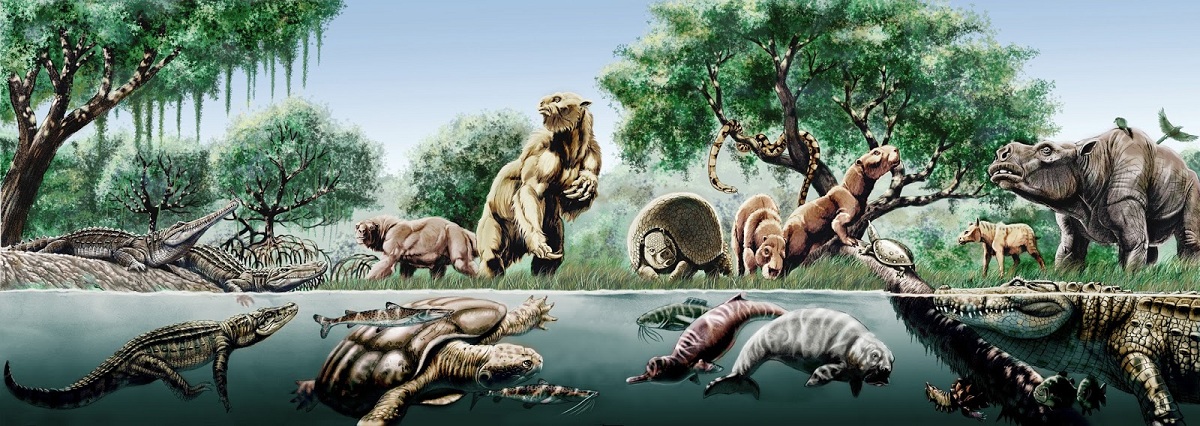
The era of Mesozoic contains 3 periods where dinosaurs spread and became extinct. These three periods are: Triassic, Jurassic y Cretaceous. Within each period there was a great development of fauna and dinosaurs, especially the Jurassic fauna. Today we are going to talk about the development and extension of the Cretaceous fauna.
If you want to know more about the expansion of the dinosaurs and the Cretaceous fauna, this is your post.
Cretaceous fauna

Throughout the 79 million years that this period lasted and the two eras that it had, the Cretaceous fauna was dominated mainly by dinosaurs. At that time there was a great variety of both marine and terrestrial dinosaurs. In addition, some fish and invertebrates also spread. Mammals in this period constituted a smaller group but began to proliferate in the following period.
We are going to analyze one by one the types of animals that developed during the Cretaceous.
invertebrates
Among all the invertebrates that developed, especially in the marine environment, we can mention mollusks. Among the mollusks, the ammonoids that were cephalopods stood out. Other invertebrates that were widespread were coleoids and nautiloids.
The phylum of the echinoderms had a proliferation during this period. Within this phylum we highlight some of the main species of starfish, echinoids, and ophiuroids. All this information has been collected thanks to the fossil deposits known as amber deposits. These sites contain great information about arthropods. It has been possible to find specimens of spiders, dragonflies, bees, wasps, butterflies, ants, grasshoppers, among others.
Vertebrates
Vertebrates also had great proliferation during the Cretaceous period. The most prominent within this group were the reptiles. In the reptile group, dinosaurs stood out both in the common terrestrial environment and in the marine environment. These dinosaurs coexisted with marine reptiles and fish.
In terrestrial ecosystems the group of mammals began to develop slowly. Its diversification began with some species that had been evolving from the marine habitat. The same happened with the group of birds.
Importance of dinosaurs in the Cretaceous fauna

As we have mentioned before, dinosaurs formed an important part of the Cretaceous fauna. And it is that during this time, regarded as the golden age of dinosaurs, Both the viper and carnivorous terrestrial dinosaurs were developed as well as the marine ones. We are going to analyze each one of them.
Land dinosaurs

It was the most diverse group throughout this period. They were divided into two large groups based on their diet. On the one hand, we had the carnivorous dinosaurs, and on the other, the herbivores.
Herbivorous dinosaurs
They were also known by the name of ornithopods. This group of dinosaurs had a diet consisting of only plants. Within this group we find predominant species such as:
- AnkylosaursThese dinosaurs were large and sometimes reached a length of 7 meters and a height of almost 2 meters. The average weight of these species was 4 tons. In order to protect itself from its carnivorous predators, its body was covered or by bony plates that functioned as a cuirass. All this information has been obtained thanks to the fossils found in which it was possible to see that the front members were shorter than the rear ones. Its head was similar to a triangle, as its width was greater than the length.
- Hadrosaurs: These dinosaurs are also known as duckbills. They also had a large size between approximately 4 and 15 meters long. They could have a large number of teeth to be able to grind the grass well. On some occasions fossils have been found with a jaw of up to 2000 teeth arranged in rows and all of them were of the molar type. The tail was quite long and flattened. The main purpose of this tail was to maintain balance when moving on two legs to flee from predators.
- Pachycephalosaurs: They were large dinosaurs whose main characteristic was to have a bony protrusion that simulated as if it were a helmet. Its main function was that of protection. In some specimens, the protuberance could reach a thickness of up to 25 centimeters. It was a type of bipedal dinosaur and could reach a length of up to 5 meters and a weight of 2 tons, approximately.
- Ceratopsids: these dinosaurs were quadrupeds. They had horns on the facial part. They also had an enlargement of the back of the head that extended to the neck. They had heights of up to 8 meters and reached a prisoner of up to 12 tons.
Carnivorous dinosaurs
The carnivores include the group of theropods. They are carnivorous dinosaurs being large and representing the predominant predators. Most of them were large in size with highly developed and strong limbs. They were bipeds and their main feature was that they had two facing forward and one backward.
Of this group of carnivorous dinosaurs it may be the best known Tyrannosaurus Rex.
Flying reptiles
Of the flying reptiles the best known is the Pterosaurs. Although many include these animals in the group of dinosaurs, this is not the case. These animals were the first vertebrates that could acquire the ability to fly. Its size could reach up to 12 meters of wingspan.
Marine reptiles

Another group that developed a lot in the Cretaceous fauna were the marine reptiles. They were usually large between 12 and 17 meters in length. The best known were mosasaurs and elasmosaurids. Elasmosaurids had some main characteristics in which they stood out for having a long neck as they had a large number of vertebrae. They fed mainly on fish and mollusks.
On the other hand, mosasaurs were reptiles that were adapted to marine life. They had a long tail and a vertical fin.
I hope that with this information you can learn more about the Cretaceous fauna.